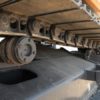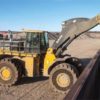Fluid Management Best Practices for Construction Equipment

Maintaining and analyzing the condition of engine oils, hydraulic fluids and coolant in equipment will provide owners and operators valuable insight into the condition of their machines.
Not only will it help extend the life of the machine and boost productivity, but it will also help fleet managers avoid costly downtime and repairs.
When it comes to selecting fluids and oils for machines, the most important practice is to check the operator’s manual. It has the recommended fluids and capacities for each machine, as well as suggested service intervals.
Here are some additional best practices for most types of oils and fluids that construction equipment needs to run successfully on the jobsite.
General Best Practices
There are a few general fluid and oil management practices that equipment managers can apply to their entire fleet.
- Keep a chart of all the machines in the fleet and differentiate which require different oils. Ask questions such as, “If I purchase this oil, which pieces of the fleet utilize it? Which components can it cover? How many different oils do I need to have in stock? Do I need to go out and purchase a specialized fluid?” Keeping a detailed chart will also help determine how often fluid should be bought, whether it’s monthly, quarterly, semi-annually, etc.
- Look at how much oil or fuel is being consumed, how often and the operator’s scheduled maintenance schedule. Depending on the jobs at hand, it might be beneficial to shorten or extend the scheduled maintenance timetable.
- Know who is responsible for topping off fluids. Is there a fleet truck that goes around and checks the fluid levels and makes sure they’re filled? Or will operators be responsible for their own machines?
- Develop a close relationship with the dealer. Equipment owners should be able to sit down and discuss with their dealer how to best manage the fluid systems on their equipment. Owners should also be well versed in the warranty on their machine and how the fluids used can affect it.
- Getting a fluid analysis can also protect equipment. For example, the CASE Systemgard™ fluid analysis program involves sending small samples of the equipment’s engine oil, transmission oil and coolant to a lab for tests that identify the overall condition of the fluids, along with any contaminants. The resulting reports can give fleet managers a heads-up on a wide range of equipment conditions, from ineffective air filtration to deteriorating bearings, so that they can address performance or wear issues prior to a costly failure.
Engine Oil
Engine oil is a critical part of the machine as it’s responsible for protecting the engine’s vital internal components against corrosion.
Equipment owners should use genuine OEM oils and filters that have been specifically designed and engineered for their manufacturer’s equipment. Often times, using out-of-spec fluids, or mixing fluids, could cause costly damage to the machine and its components.
Generally, construction equipment is able to go up to 300 hours between engine oil change intervals. Some manufacturers, such as CASE, offer specialized engine oils that extend service life. The manufacturer’s Unitek engine oil is a semi-synthetic that extends intervals to around 500 hours.
The operator’s manual will also outline the variation of engine oil life for atmospheric temperatures and which viscosity grade to use. Viscosity refers to how the fluid flows in certain temperatures.
In colder temperatures, a thinner oil works best, while a thicker fluid is suggested for warmer temperatures. The lower the number before the W in the viscosity grade, the more it can tolerate cold weather. For example, if a machine is working in conditions of -20°, a 0W40 oil is suggested. The number after means it’s thick enough for a hot engine and has a higher heat tolerance.
This is why it’s crucial for owners and operators to follow their machine’s manufacturer’s lubricant and change interval recommendations.
Hydraulic Fluid
Hydraulic fluid is a multi-functional tool that helps keep a machine running smoothly. Not only is it responsible for the transferring of heat, but it’s also used as a sealant and lubricant.
The first thing to know about hydraulic oil is there is no universal spec for it. Each manufacturer has a particular type of hydraulic oil with its own viscosity grade suitable for their machines. There are generic hydraulic oils on the market, but these are often not backwards compatible, meaning they can’t be outfitted to older machines, and could cost owners money in the long run.
It’s critical that users follow the OEM’s recommendations when specifying hydraulic fluid. Owners need to consider the pump and equipment specification, the load used on the fluid, pump type, and the operating conditions and applications.
Fluids should be stored in proper drums or tanks to avoid water and contaminates. Fluids should be checked for cleanliness on a regular basis. Fleet managers should look for sediment and clarity, and, like other fluids, if any “haziness” is detected, it could indicate excessive water or contamination.
Owners should make sure their operators are properly trained in the hydraulic system and its fluids. This includes proper maintenance of seals and hoses, using clean funnels and paying close attention to any leaks.
Hydraulic fluids should be changed as often as recommended in the owner’s manual or more frequently if working in harsh or extreme environments.
DEF
With the industry’s rollout of Tier 4 engines, more manufacturers are turning to SCR technology to meet Tier 4 Final emissions standards, and that requires diesel exhaust fluid (DEF). DEF is injected into the exhaust stream and converts emissions into nitrogen and water.
DEF is made up of 67.5 percent de-ionized water and 32.5 percent high-grade synthetic urea, and is safe and easy to handle. However, just because DEF is generally safe and inert doesn’t mean that it can be managed casually. In fact, the quality and integrity of DEF must be preserved for the Tier 4 system to function at peak performance.
Proper management of DEF requires it to be protected against evaporation and extreme temperatures, with the biggest concern being that it’s easily contaminated.
Equipment that uses DEF feature sensors to continually analyze the quality of the DEF being consumed. If an imbalance is detected, caused by evaporation or contamination, a fault code will be triggered. The injectors that meter DEF into the exhaust stream are precision instruments with tight tolerances similar to fuel injectors. Most SCR systems have a cartridge filter to protect these injectors, and keeping DEF free of all contaminants will help ensure maximum filter life.
One of the prime maintenance requirements for a DEF system is that that filter inside the pumping module generally needs to be changed at 1,200-1,500 hour intervals (depending on model/system). It’s the owners’ and operators’ responsibility to check the number of hours on the machine and change the filter accordingly.
Operators should visually check the fluid and take note of its appearance. The first indication of contamination is cloudiness, discoloration or the presence of particles.
Another important practice is the proper storing of DEF. Some components of the fluid are vulnerable to degradation from harsh sunlight or extreme temperatures. However, the greatest threat to DEF purity comes from containers and pumping systems.
DEF should be handled in dedicated containers that were manufactured specifically for the fluid, made with materials approved in the ISO standard, and rinsed and sealed accordingly. Operators should not reuse or refill open containers. It’s important that DEF remain in a closed loop system from the supply all the way to machinery in the field, which provides the most protection from contamination.
With a proper container of HDPE plastic or stainless steel in average temperatures of 50°F, DEF can maintain its qualities for around 36 months. This reduces to 18 months at 77°F, 12 months at 86°F and just six months for DEF that is consistently exposed to temperatures above 96°F.
OAT Coolant
Tier 4 diesel engine technologies have altered the way equipment systems and engines run. These advances have also expanded the market for new engine coolants, which create higher combustion temperatures and cylinder pressures.
Many Tier 4 Final machines feature Organic Acid Technology (OAT) coolant, which is a form of extended life coolant. Its primary benefit is the increased protection to the engine and better performance over its service life.
Factory-filled machines will feature a decal near the fill point that clearly indicates the use of OAT coolant and its brand or formulation. When it comes to OAT coolants, this is important for two reasons.
For starters, conventional coolants cannot be mixed with OAT coolants, and secondly, other brands of these coolants cause issues if they don’t match the material spec of the factory coolant. Mixing brands with the factory-filled coolant will diminish its extended life properties and cause other compatibility issues.
If an operator decides to change from one coolant to another, they need to flush the system three times before adding the new coolant. This reduces the chance for any contamination. It’s also crucial to use only distilled or de-ionized water when mixing coolant from concentrate, as other waters will lower the protective capabilities.












